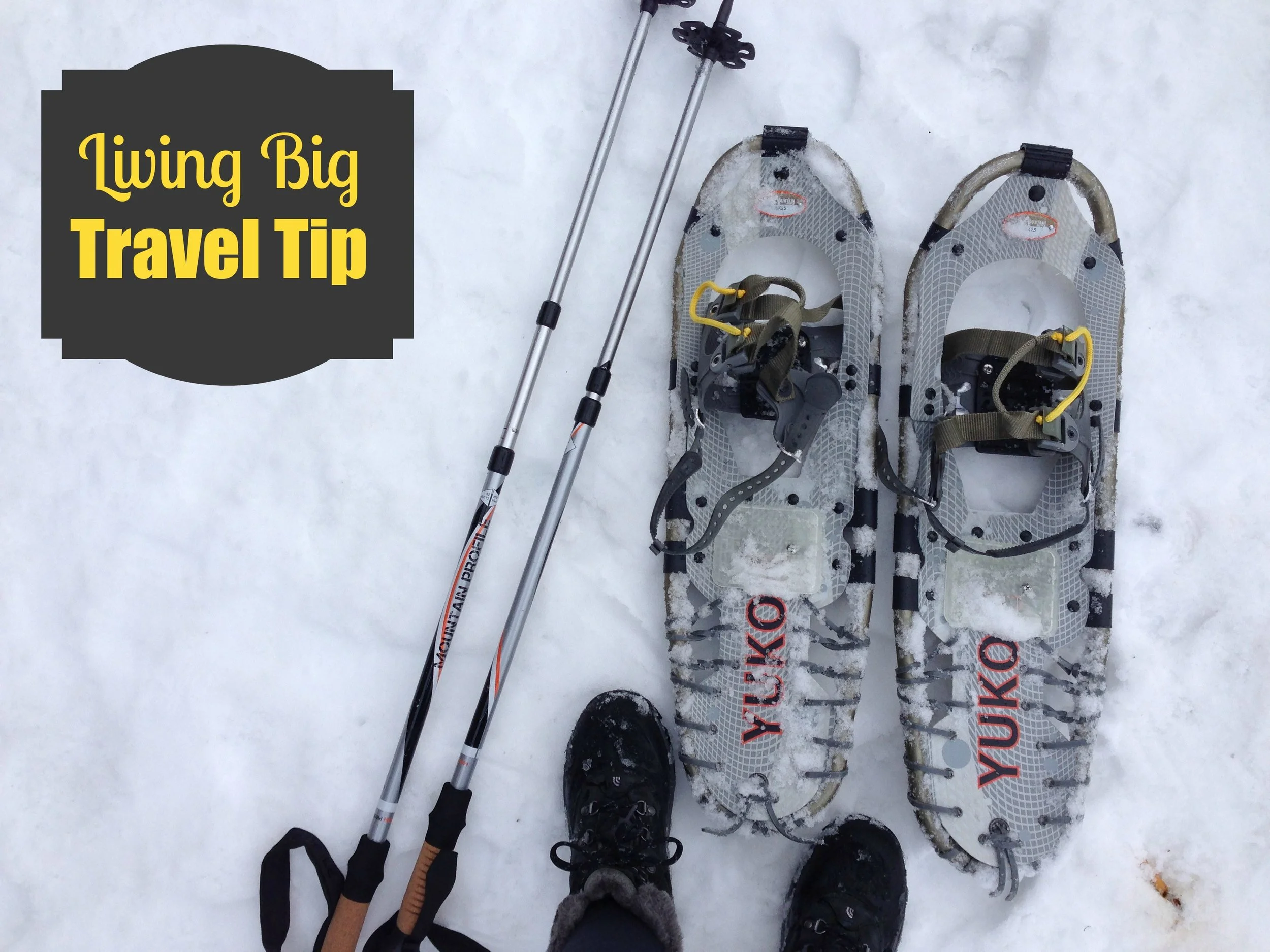Snowshoeing 101: what to wear, pack and bring
If you’re heading to the mountain for your first snowshoe adventure – congratulations! You’re going to have a great time. Well – let me rephrase that. I’m fairly confident you’ll have an amazing time IF you come to the mountain prepared. In the snowshoe world that means you’re wearing the right clothes, have the right supplies packed and know a few best practices.
To begin with….WHAT DO I WEAR? A few notes:
Because snowshoeing is such an aerobic activity you don’t want to come wearing the same outfit you would wear skiing or snowboarding. You’ll be burning up and sweating in about 10 minutes! I like to approach my outfit this way:
Base layer: the clothes closest to your skin that keep you warm. I wear pants that I use for outdoor winter running. On top I wear a tight fitting long-sleeved shirt.
Insulating layer: the clothes you can easily take on or off depending on your body temperature. I don’t generally need this layer on my legs, but I’ll put sweatpants in my back pack just in case. On top, I like to wear a fleece sweater or sweatshirt.
Outer layer: this would be the jackets and pants you put on if it’s snowing or raining
Shoes: waterproof shoes are a must. If you wear tennis shoes your feet will be wet, cold and likely blistered before you know it. Boots that go above your ankle are ideal (because it helps keep the snow out of your boot) but it’s not a must. You can use ankle boots, but just know that if you’re going to be in deep snow, the snow might creep into your shoes unless you have gaiters on. You want your feet to be warm; wool synthetic socks are ideal.
Accessories: make sure you have something warm to wear on your head (and make sure it covers your ears!) and gloves.
Now that your outfit is set…WHAT DO I PACK? A few notes:
You’ll want to bring a backpack that you are comfortable hiking in. Here are some of the supplies you should consider bringing, but know that the exact supplies you need will depend on the conditions of where you’re hiking, how long you’ll be hiking and your skill/comfort level in the snow and forest.
Water bottle (I’d bring one for each hour of hiking)
Hot water in a thermos
Extra supplies to keep you warm and dry: gloves, socks, hand/foot warmers, your outer layers (i.e. rain jacket and rain pants)
Sunglasses and sunscreen (when the sun reflects off the snow you can easily get burned!)
A protective case for your camera or phone (or just use a ziplock bag to keep the moisture out)
Snacks or lunches (make sure you pack everything out with you, do not leave garbage on the trail!)
First-aid kit: always build your first-aid kit with supplies that are specific to the activity you’re doing and injuries that could likely happen in this environment. So in this case that means: ziplock bags (to create ice packs with snow) lots of tape for sprained ankles and wrists, emergency space blankets and all the usual supplies.
Safety supplies such as a flashlight (a headlamp is actually ideal since your hands will be holding poles) a compass, map of the area, lighter and waterproof matches (or matches in a waterproof case) and whistle.
Study the map so you know where nearby resources are located: i.e. the ranger station, ski resorts, mountain huts, etc. If you are traveling with a phone, bring an extra battery and assuming there is service know the phone numbers for a local hospital, ski patrol and other safety resources.
Always let someone at home know where you are going, how long you intend to be gone, what route you plan to cover, when you expect to be back home, etc.
I don’t own snowshoes. What should I know before I RENT OR BUY SNOWSHOES? A few notes:
The type of snowshoes you buy starts with the type of terrain you want to snowshoe on: flat, rolling or mountain. If you’re a casual snowshoer like me, snowshoes made for “flat” terrain will satisfy the majority of your needs. Talk to the sales or rental staff for specifics of each type.
Snowshoes are generally made for men or women. The difference is in how the snowshoes are tapered
Snowshoes come in different lengths. The length you need will be based on your weight. Ask the sales or rental staff for what snowshoe length you need based on your weight.
I highly recommend you snowshoe with poles. The poles will help maintain your balance and will help you navigate hills, creeks and ice patches.
Happy snowshoeing and cheers to ‘living big’ —- !
Mary



